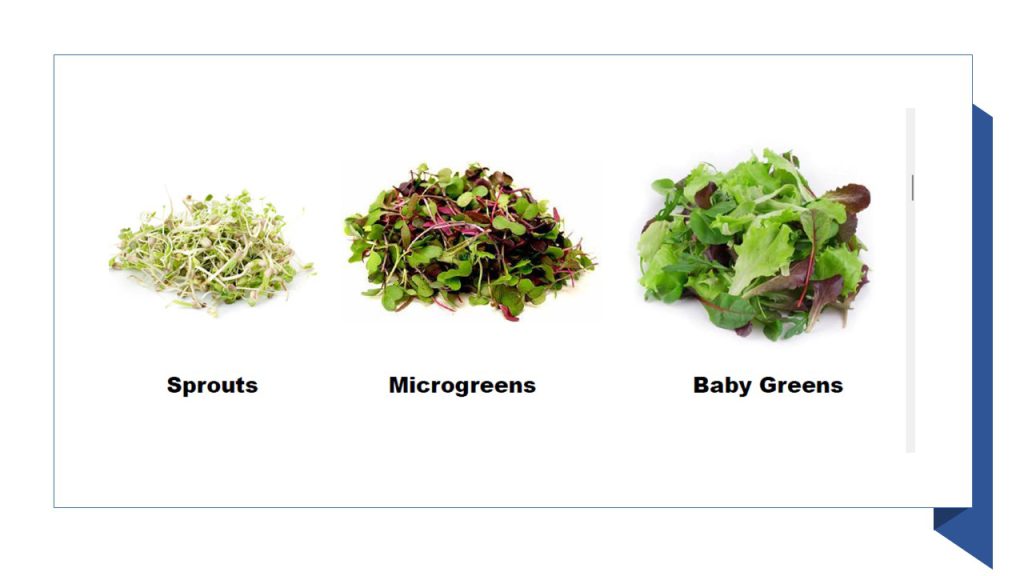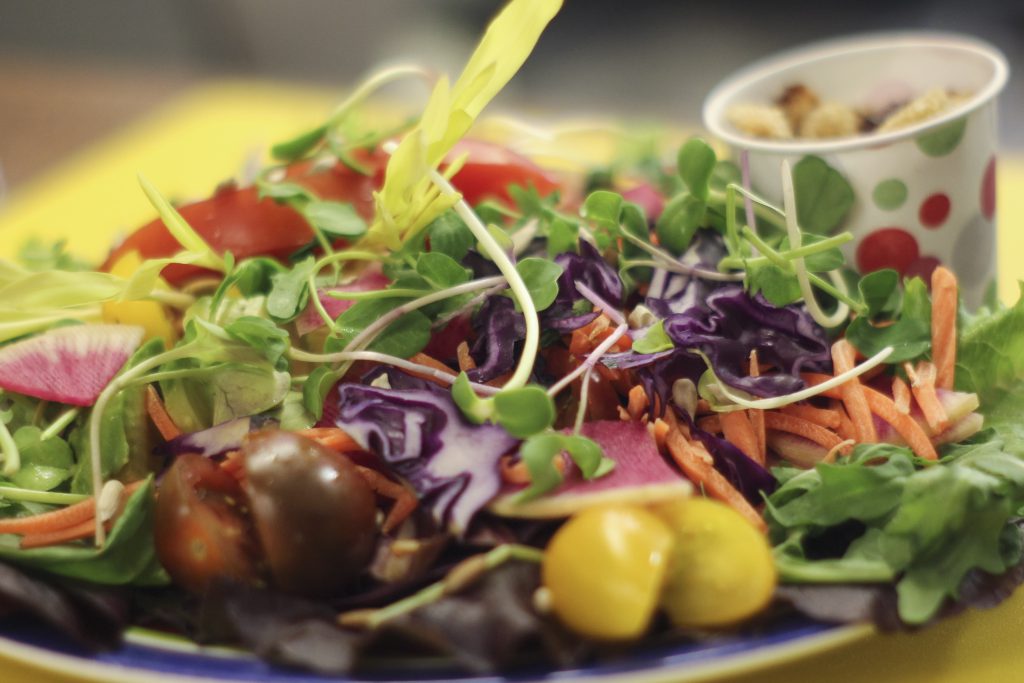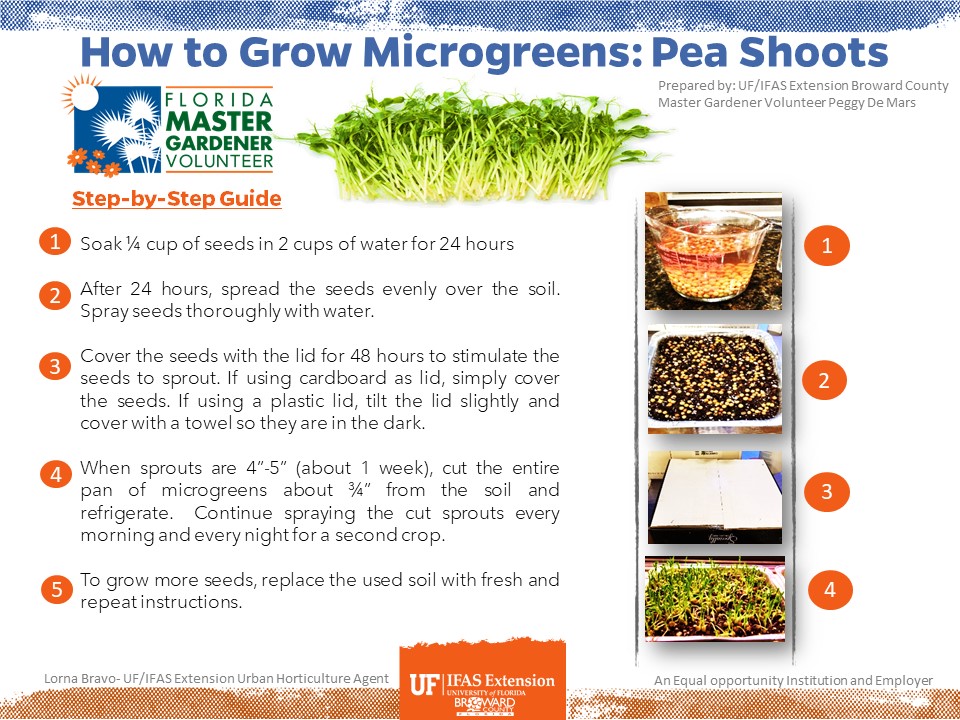Article by UF/IFAS Extension Broward County Urban Horticulture Agent Lorna Bravo
What are Microgreens?
Microgreens are emerging specialty crops that have become increasingly popular in recent years. They are young, tender greens harvested at the cotyledon stage or when the first true leaves emerge. The stem is snipped just above the soil and sold with the stem, seed leaves, and first true leaves attached. Microgreens are not the same as baby greens, which are more prominent, or sprouts, which are harvested earlier and contain the roots but not the true leaves.

What are some of the benefits of Microgreens?
- First, they have a very short production cycle.
- Second, they are easy to grow and don’t need fertilizers or pesticides due to the short growth period.
- Third, the growing system is relatively easy to set up. They are nutrient-rich; you can grow them year-round and easily at home.
Choosing your Microgreens
Did you know that there are dozens of crops to choose from for growing microgreens; between 80–100 different crop varieties have been reportedly used!
Growing your Microgreens
Microgreens are harvested when they are 2 inches tall. Most microgreens like Broccoli, Radish, Kale, Mustard, and Sunflower do not grow after harvesting, but some microgreens like Pea shots and Wheat Grass can. Microgreens are called vegetable confetti; these tiny greens can add fun color and nutrients to any dish you prepare. They are great for soups, stews, salads, sandwiches, main dishes, and garnishes. The kitchen window is an ideal place to grow them — you can keep a close eye on them and have them right where you need them when you’re ready to use them.
Common Microgreen problems
Growing microgreens are easy, but mold invasion is one of the more common problems growers face. The reason why microgreens get sick and fall over is that the environment they grow in may be too damp or there is not enough light. High temperatures, humidity, and poor circulation are factors affecting microgreens. Keep temperatures between 60 to 70 F temperature and 55% humidity.
Tiny but Mighty
Did you know you can harvest microgreens within seven to 21 days? This is much shorter than mature leafy greens. These microscale edible greens have inspired great interest lately due to their vivid colors, tender textures, unique flavors, and incredibly concentrated nutrients and health benefits. Even NASA is researching microgreens to use them as one of the potential food sources for astronauts. How do You Harvest Microgreens in Microgravity? | Science Mission Directorate (nasa.gov)
Are you ready to get started?
- Grow your Microgreens from home: Pea Shoots in 8 days. This is your material list
- You can reference our step-by-step guide.
- Watch our video
Resources:
- Current Opinion in Food Science (2022). DOI: 10.1016/j.cofs.2022.100863
- Microgreens-Gardening Solutions.Microgreens – Gardening Solutions – University of Florida, Institute of Food and Agricultural Sciences (ufl.edu)
- Microgreens: A New Specialty Crop. HS1164/HS1164: Microgreens: A New Specialty Crop (ufl.edu)
Contact us.
- You can follow our Facebook page at @http://facebook.com/urbanhortbroward
- Visit our Website@ http://sfyl.ifas.ufl.edu/broward/urban-horticulture/
- Our Twitter page: https://twitter.com/HortUrban
- Visit our YouTube Channel at https://tinyurl.com/urbanhhortbcyoutube
- Our Instagram page:
 2
2





